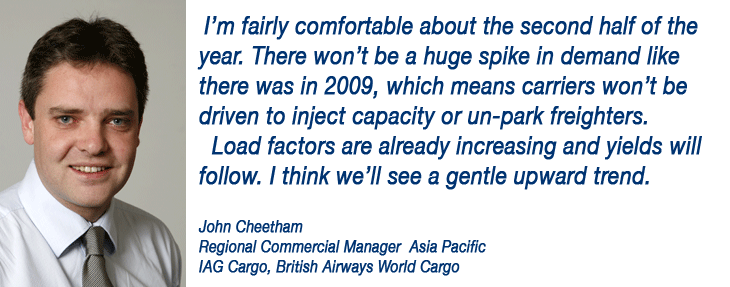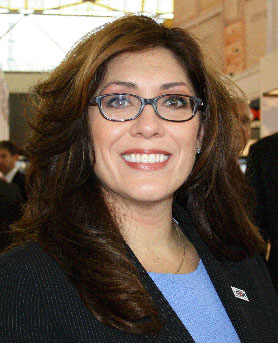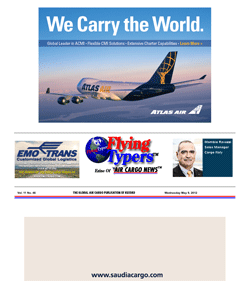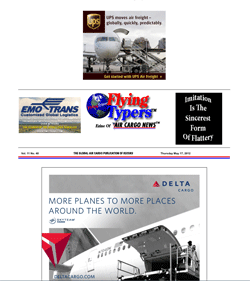
 |
Reductions in capacity on Asian
lanes are gradually improving carrier yields, according to one leading
airline executive, who predicts demand ex-Asia will improve later
this year.
John Cheetham, Regional Commercial
Manager of IAG Cargo Asia Pacific British Airways World Cargo, tells
FlyingTypers that the Far East market is still “depressed”
and exports demand “poor.” And, while year-on-year volumes
are at least now “flat-lining instead of contracting,”
this is mainly due to the low base of 2011 with “market volumes
still poor.”
“A certain amount of capacity
has left the market, people are not sweating their assets as they
have done in the past. So that should improve everyone’s load
factors, which is positive for carriers, but exports are not improving
yet.”
There has also been some realignment
of capacity, with freighters shifted away from Europe into Africa
or Latin America. “We started an African freighter service
to Johannesburg ourselves,” he said.
“When Asia dips people search
for where they can put their freighters. There are always going
to be volumes out of Africa, but the yield levels will be driven
by capacity fluctuation, which sometimes makes it difficult to justify
pure freighter operations.”
Despite the poor economic prospects
many analysts predict for Europe, Cheetham retains his optimism
for the rest of the year. He says global hi-tech export demand is
improving and garment exports out of Asia, particularly Bangladesh,
are showing encouraging signs.
“The garment demand is for the
U.S., where consumer confidence and retail figures are fairly positive,”
he explains.
“Earlier this year, all carriers
had a big boost post-Chinese New Year from new smart phones and
new hi-tech launches being shipped. Electronics in general are fairly
positive.
“But Europe is still pretty
desperate. The Euro doesn’t look good, the UK is back in recession,
and consumer demand is weak.
“Even so, I’m optimistic
about the year. There is a low base, so year-on-year comparisons
will start to look better. Consumer trends will also have to change.
But I think the U.S. is the first penguin off the iceberg—Europeans
will have to jump at some point. The UK also has a spending culture
addicted to credit.
“I’m fairly comfortable
about the second half of the year. There won’t be a huge spike
in demand like there was in 2009, which means carriers won’t
be driven to inject capacity or un-park freighters.
“Load factors are already increasing
and yields will follow. I think we’ll see a gentle upward
trend.”
BA World Cargo, under its new International
Airlines Group banner, which incorporates both BA and Iberia and
their combined fleet of over 300 aircraft, is well placed to serve
Asia via its Heathrow hub. The IAG Cargo business is now managed
as a single entity, which means that British Airways World Cargo
customers in Asia can book freight across both carriers. This has
resulted in an increase of capacity in some key markets and “has
created a seamless link between Asia and South America,” insists
Cheetham.
Three leased B747-8s supplement the
carrier’s global network of passenger services with bellyhold
capacity.
In Asia, the fleet operates five times
weekly into Hong Kong and twice per week through Shanghai, offering
a range of pick-ups in India and Bangladesh.
BAWC will also start operating B777s
six times per week into Seoul, South Korea, in December, offering
ample bellyhold capacity into a market that Cheetham expects will
improve as time passes.
“We’re quite excited about
that,” he says. “The Korean market has been through
a difficult time. It’s generally quite a good market, but
because so few shippers dominate it and they’ve been hit so
badly, it has shrunk around 30 percent to the UK. Korea has felt
the shock more than anywhere else, but it is fundamentally a strong
market and will benefit from any global recovery.”
He says the one Asian market which
has proven consistently strong this year has been Thailand, which
was devastated by floodwaters that closed much of its hi-tech and
auto industry in the latter part of 2011.
“They are back at pre-flood
levels, doing very, very well,” he says. “It’s
just a high performing market; we have daily pax flight in there
with a 747 and it’s very strong.”
SkyKing |






 At
O’Hare International Airport, Chicago Mayor Rahm Emanuel announced
a new “Northeast Cargo Center” to be built in three
phases on approximately 65 acres of undeveloped property at the
gateway.
At
O’Hare International Airport, Chicago Mayor Rahm Emanuel announced
a new “Northeast Cargo Center” to be built in three
phases on approximately 65 acres of undeveloped property at the
gateway. "It
will be largest airside cargo development built in the last decade
at a U.S. gateway airport," said Aviation Commissioner Rosemarie
Andolino, “approximately doubling O’Hare’s cargo
capacity.”
"It
will be largest airside cargo development built in the last decade
at a U.S. gateway airport," said Aviation Commissioner Rosemarie
Andolino, “approximately doubling O’Hare’s cargo
capacity.”


 RE:
RE:



